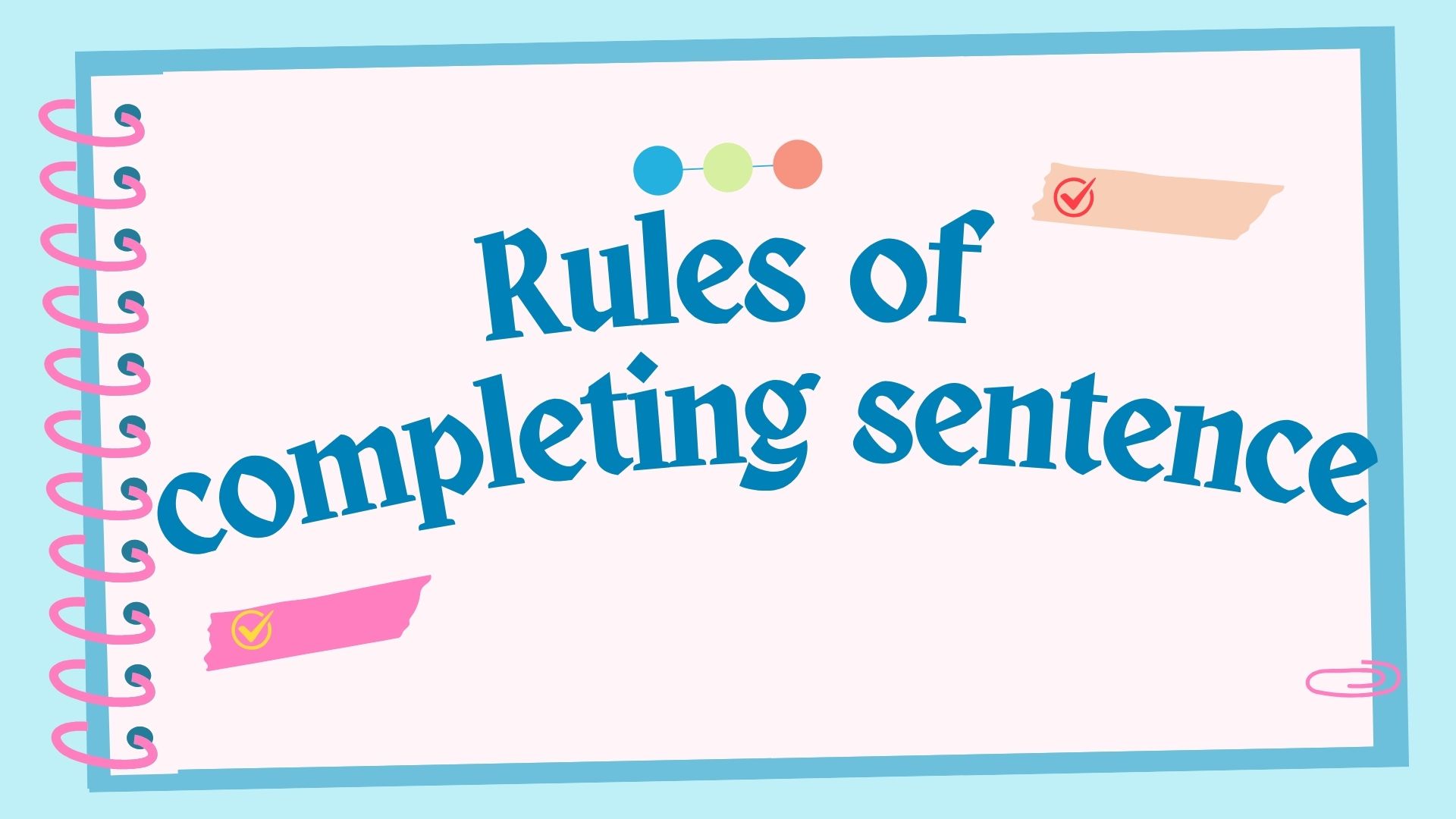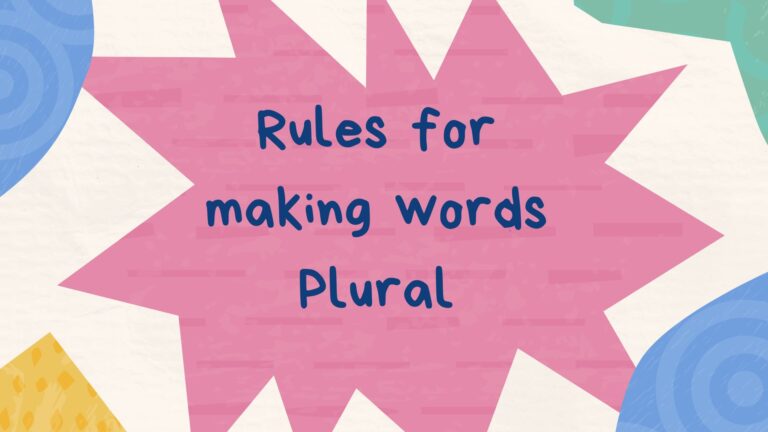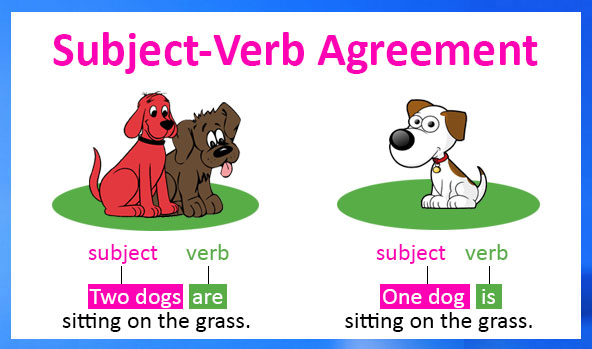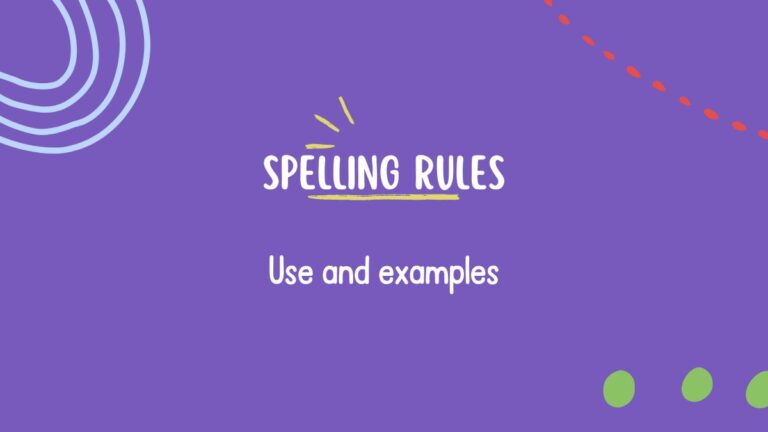Grammar Tips: Rules of Completing Sentences
Completing sentences effectively is an essential skill that can enhance your writing clarity and impact. In this article, you will find all the rules of completing sentences. But first of all learn that what is sentence.
Basic Sentence Structure
A sentence is a group of words that expresses a complete thought. Every complete sentence must have two basic parts:
- Subject
- Verb/Predicate
Example:
She (subject) is reading a book (predicate).
Key rules of Completing Sentences
Here is a detailed explanation of rules of completing sentences.
Subject-Verb Agreement
Subject verb agreement is a necessary rule. Always match subjects with the correct verb forms. This ensures that your ideas are communicated clearly.
Example:
He eats breakfast early. (Right)
They eat breakfast early. (Right)
They eats breakfast early. (Wrong)
Be Concise:
Avoid unnecessary words for good impression. It is basic in the rules of completing sentences. Get straight to the point, ensuring every word serves a purpose in conveying your message.
Example:
She was watching TV when the power went out. (Right)
She was watching TV when the power goes out. (Wrong)
Maintain Parallel Structure:
When listing items or ideas, keep them in a similar format to improve readability and flow. This consistency helps readers follow your thoughts more easily.
Correct:
She enjoys reading, writing, and painting.
Incorrect:
She enjoys reading, to write, and painting.
Use the Right Conjunction
Conjunctions help join ideas. Choose one based on meaning. It clarifies the sentence.
Coordinating: and, but, or
Subordinating: because, although, since, if
Correlative: either, or, not only, but, also
Example:
I like coffee and tea.
I will go if it doesn’t rain.
Punctuation
Correct punctuation indicates pauses and connections between ideas. A well-placed comma or period can change the meaning of a sentence entirely.
- Start sentences with a capital letter.
- End with a period (.), question mark (?), or exclamation mark (!).
- Use commas(,) for pauses, lists, and clarity.
Example:
Where are you going?
I bought apples, oranges, and bananas.
Clear Pronouns
Make sure the pronoun refers clearly to a noun and agrees in number and gender.
Example:
Sarah lost her phone. (Right)
They lost his phone. (Wrong)
Stay On Topic
Each sentence should deliver the correct meaning of your message. Straying off-topic can confuse readers and affect your communication. It would have bad impression if you don’t stay on one topic.
Example:
After finishing his homework, John decided to watch a movie. (Right)
After finishing his homework, John decided that apples are red. (Wrong)
Modifiers
A modifier describes or adds more information. Put it close to the word it describes.
Example:
Running down the street, she saw a cat. (Right)
Running down the street, a cat was seen by her. (Wrong)
Choose the Right Words
Use words appropriate for the meaning. Avoid repetition, unnecessary words, or confusing terms. Use simple terms to explain your point of view.
Example:
He’s exhausted after working all day. (better than just saying “tired”)
Don’t say: “He is very really extremely tired.”
Avoid Fragments:
A sentence fragment is usually missing a subject, verb, or complete idea. To fix it, make sure it expresses a full thought. For instance, “When we went to the park” is a fragment because it does not convey what happened.
Example:
Because she was tired. (Wrong)
Because she was tired, she went to bed early. (Right)
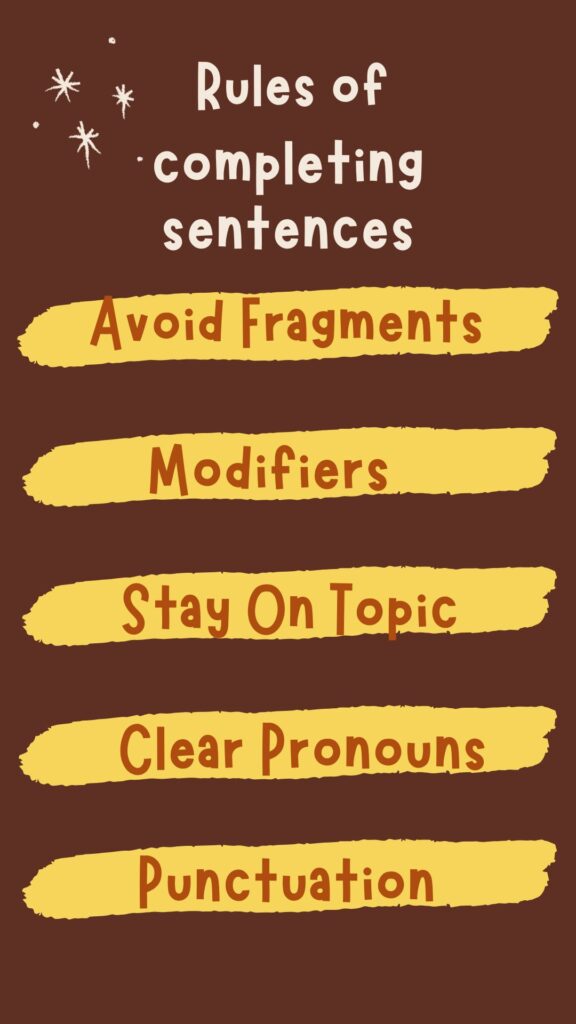
By following these rules for completing sentences, you’ll not only improve the quality of your writing but also engage your audience more effectively. Embrace these guidelines, and watch as clarity transforms into compelling content.

